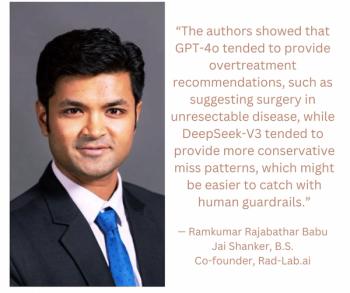
Study Offers Closer Look at AI-Enabled Tool for Assessing Breast Density
The artificial intelligence (AI) model reportedly had an 89.3 accuracy rate in differentiating between non-dense and dense breasts on mammography scans, and a 90.4 percent rate of agreement with human radiologist reviewers.
Could artificial intelligence (AI) play a key role in automating breast density assessment on mammograms in the near future?
Recognizing the inherent variability with visual assessment of breast density on mammograms via the four categories of the Breast Imaging Reporting and Data System (BI-RADS), the authors of a recently published study in
In a review of 384 mediolateral oblique (MLO) views from 197 mammograms in 197 women (with a mean age of 56), the researchers found that the AI software model TRACE4BDensity (DeepTrace Technologies) demonstrated an 89.3 accuracy rate (343/384) and a 90.4 percent rate of agreement (178/197 mammograms) with human radiologists in identifying nondense versus dense breasts.
“Distinguishing dense from nondense breasts is indeed the clinically most relevant task and may drive the potential referral to supplemental screening,” wrote Francesco Sardanelli, MD, a professor of radiology at the University of Milan in Italy, and colleagues. “This result offers a robust way to overcome the variability of human visual assessment.”
The study authors also noted a 75 percent accuracy rate for the AI software in differentiating between the four BI-RADS categories, ranging from an almost entirely fatty presentation (Category A) to extremely dense (Category D).
TRACE4BDensity consists of three convolutional neural networks, according to the study authors. They noted the development of the AI-enabled software involved reference labeling based on independent assessment by seven board-certified radiologists who viewed MLO mammography scans drawn from a population-based screening program in Milan, Italy.
The authors did acknowledge study limitations including a lack of quantitative breast density measurements and having only three human radiologists provide the comparative reliability analysis.
Newsletter
Stay at the forefront of radiology with the Diagnostic Imaging newsletter, delivering the latest news, clinical insights, and imaging advancements for today’s radiologists.




























